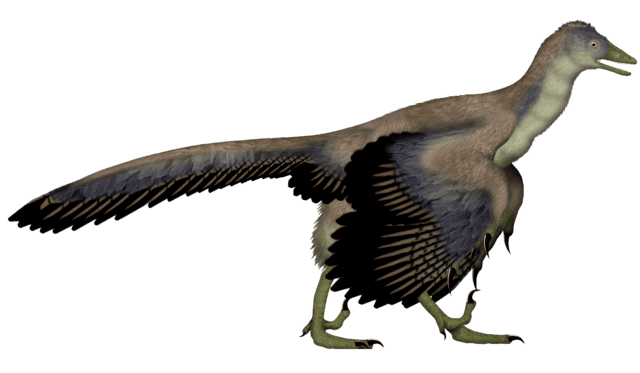
Archaeopteryx is often heralded as the bridge between dinosaurs and birds. Discovered in the 19th century, this creature embodies the transition from non-avian dinosaurs to modern birds. Its fossils, primarily found in southern Germany, date back to the Late Jurassic period, approximately 150 million years ago. It sported feathered wings and a toothed beak.
Discovery and History
Archaeopteryx’s story begins in the late 19th century, amid the limestone quarries of southern Germany. The first relic, a single 150-million-year-old fossilized feather, was unearthed in 1861 near Solnhofen, sparking immediate interest. It looked shockingly similar to modern bird feathers — only it was encased in stone.
This discovery coincided with the burgeoning field of paleontology and Charles Darwin’s theory of evolution by natural selection, casting the feather into the spotlight.
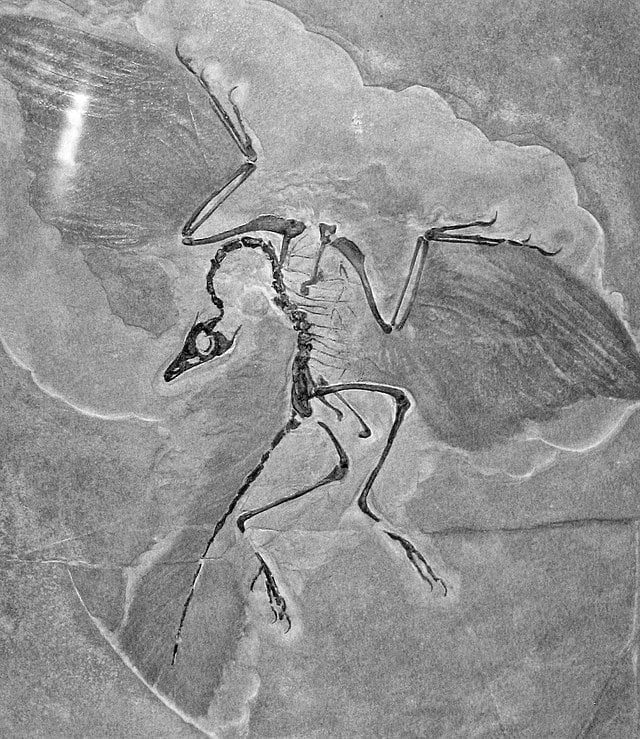
Later that year, the “London Specimen” emerged — an almost complete skeleton showcasing both avian and reptilian traits. Sold to the British Museum, this specimen lacked a head but provided enough evidence to link the feather to the Archaeopteryx genus. Over time, a total of twelve specimens have been identified fitting the Archaeopteryx description. The “Berlin Specimen“, discovered in the 1870s, stands out for its completeness, including a fully preserved skull.

Archaeopteryx’s journey is one riddled with many twists and turns. Advances in imaging and analysis have sometimes challenged, yet often reaffirmed, the connection between the feather and the body fossils.
Description and Anatomy
Archaeopteryx was roughly the size of a raven, with a wingspan of approximately 0.5 meters. The animal’s most striking feature is its feathers, which closely resemble modern birds, suggesting the capability for flight or gliding.
The feathers were asymmetrical, a trait associated with flight in today’s birds, and were attached to both the arms and the tail, forming a distinctive frond-like tail. This plumage also suggests it was warm-blooded.
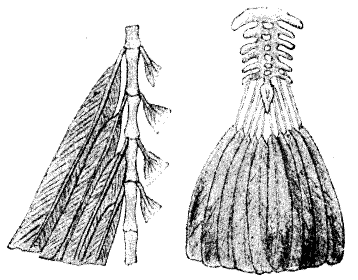
Despite its bird-like appearance, Archaeopteryx retained several dinosaurian characteristics. Its jaws housed sharp teeth, and its three-fingered hands ended in claws, indicating a predatory lifestyle. The long, bony tail, unlike the short tails of modern birds, provided balance and possibly aided in maneuvering, whether in the air or on the ground.
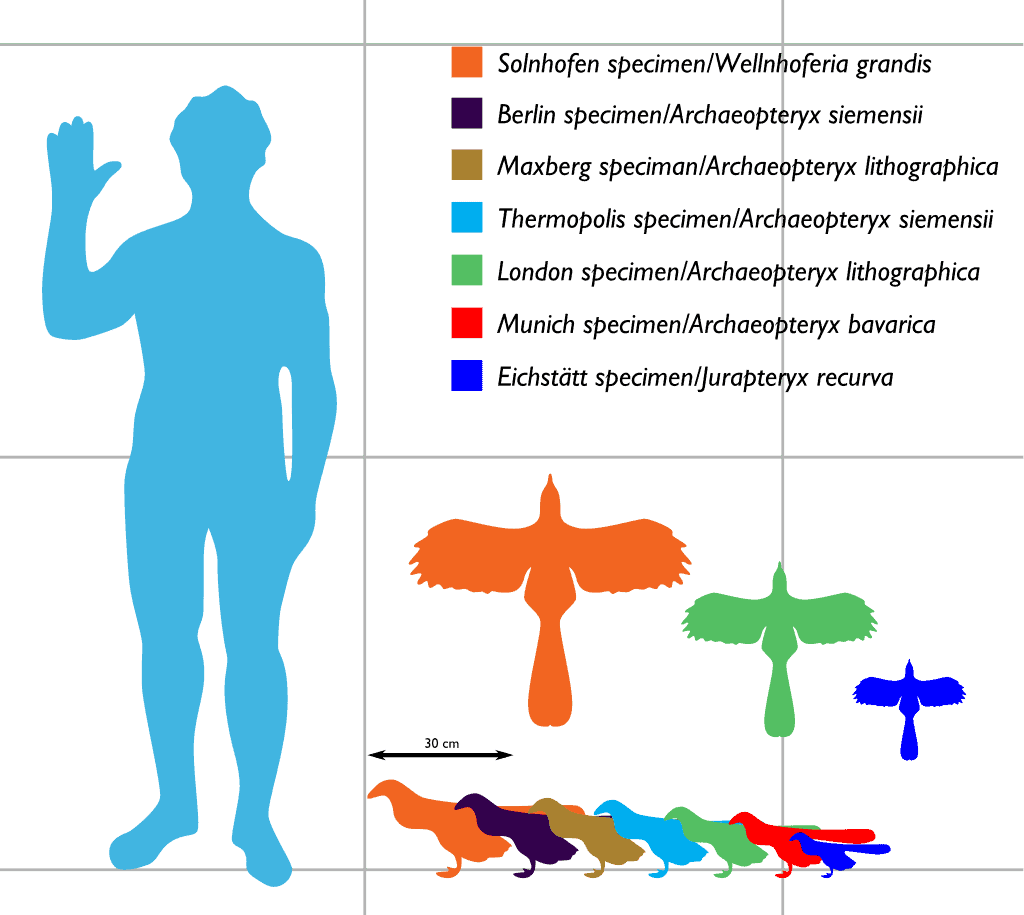
The skeletal structure of Archaeopteryx reveals a fascinating mix of adaptations. Its pelvis and hind limbs bore similarities to those of small theropod dinosaurs, suggesting a bipedal gait. However, the creature’s feet and ankles were more akin to those of birds, capable of grasping and perching. However, the absence of a reversed toe limited its ability to cling to branches as modern birds do.
Paleoecology
Archaeopteryx lived during the Late Jurassic period, around 150 million years ago, in what is now southern Germany. At that time, the region was an archipelago of islands in a shallow, warm tropical sea, closer to the equator than today. Archaeopteryx’s habitat was a coastal landscape with lagoons and sandy beaches surrounded by dense vegetation. The climate was subtropical, with warm temperatures and high humidity, supporting a variety of plant life, including conifers, cycads, and ginkgoes.
Archaeopteryx likely played a multifaceted role as a partially aerial creature in its ecosystem. Its anatomy suggests it could have been an opportunistic feeder, preying on small reptiles, amphibians, and insects. The sharp teeth and claws indicate a carnivorous diet. However, its size might have made it a predator for larger dinosaurs, pterosaurs, and marine reptiles.

Its gliding capabilities imply that Archaeopteryx could have exploited aerial niches, perhaps catching insects in flight or moving between islands. The varied terrain of its habitat would have offered numerous ecological niches to explore, from ground-level foraging to canopy hunting.
The Evolution of Bird Flight
Archaeopteryx‘s existence provided critical evidence supporting the theory that birds are, in fact, theropods (aka dinosaurs). Thus, the genus’ discovery in the 19th century added substantial weight to Darwin’s theory of evolution. Archaeopteryx’s avian and reptilian features display the gradual nature of evolutionary change.
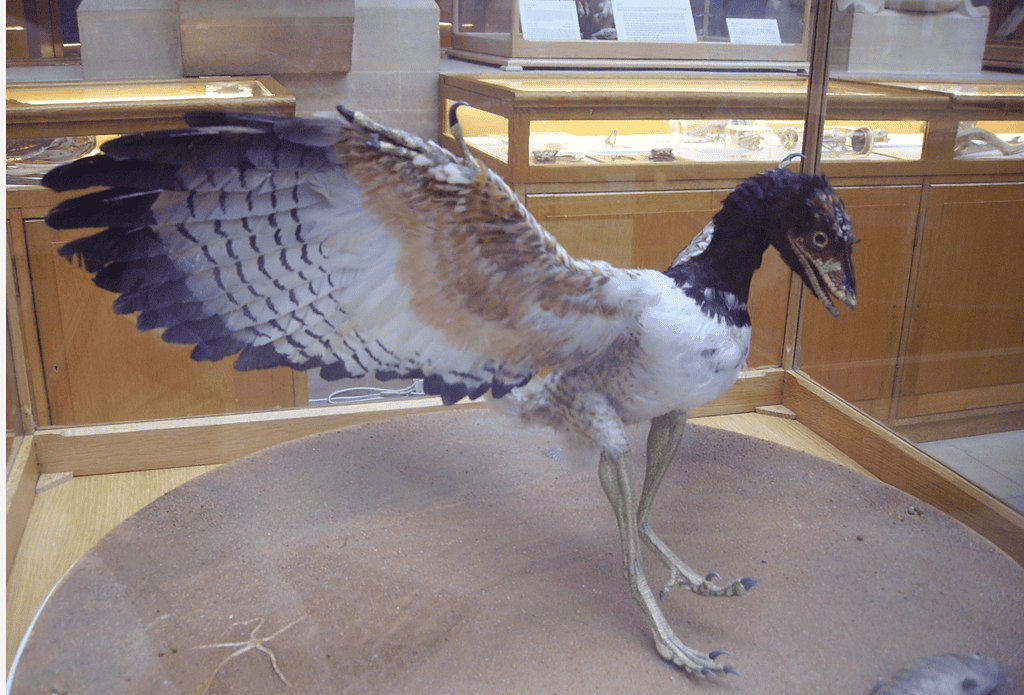
Dinosaurian creatures with plumage suggest that feathers initially evolved for purposes other than flight, possibly for insulation or display. However, features like Archaeopteryx’s feathered wings and lightweight skeleton show intermediate stages in the development of flight capabilities. While not as specialized as modern birds, its build suggests that Archaeopteryx could glide or engage in limited powered flight. This set set the stage for birds to become airborne.
Controversies and Debates
Since its discovery, Archaeopteryx has been at the center of numerous scientific debates and controversies, primarily regarding its classification and the authenticity of its fossils. Initially, Archaeopteryx was universally accepted as the earliest known bird. However, the discovery of other feathered dinosaurs has challenged its classification, with many appearing more bird-like or of similar age. This has led to questions about whether Archaeopteryx was the ancestral bird or merely one of many bird-like dinosaurs.

The authenticity of Archaeopteryx fossils has also been a contentious issue. In the 1980s, a group of researchers, including astronomer Fred Hoyle, suggested that the Archaeopteryx fossils were forgeries, with feathers artificially added to dinosaur skeletons to create sensational findings. These claims were based on perceived anomalies in the fossil’s feather impressions and the matrix surrounding them. However, detailed analyses and comparisons with other feathered dinosaur fossils have since reinforced the authenticity of Archaeopteryx specimens. Ultraviolet light examination and high-resolution X-ray imaging have confirmed the natural origin of the feathers and the consistency of the fossils with genuine sedimentary deposition.
Another area of debate involves Archaeopteryx’s flight capabilities. While it clearly had feathered wings akin to modern birds, the extent to which it could fly remains uncertain. Some researchers argue that its skeletal structure and feather arrangement suggest it was capable of powered flight, albeit clumsily. Others propose that it was primarily a glider that used its wings for display or insulation rather than flight.
Archaeopteryx Research
Advances in technology and methodology have enabled scientists to explore aspects of Archaeopteryx’s life that were previously inaccessible. Utilizing sophisticated imaging techniques, researchers have analyzed the microscopic structure of the feathers, confirming their similarity to those of modern birds. These findings reinforced the idea that Archaeopteryx could fly, at least to some extent. Studies on the feather’s melanosome structures have even suggested possible coloration patterns, indicating that some feathers were likely black, which may have had implications for thermal regulation or camouflage.
Another important area of research has been the examination of Archaeopteryx’s bone structure and growth patterns. Detailed analyses suggest that Archaeopteryx grew slower than modern birds, more akin to dinosaurs.
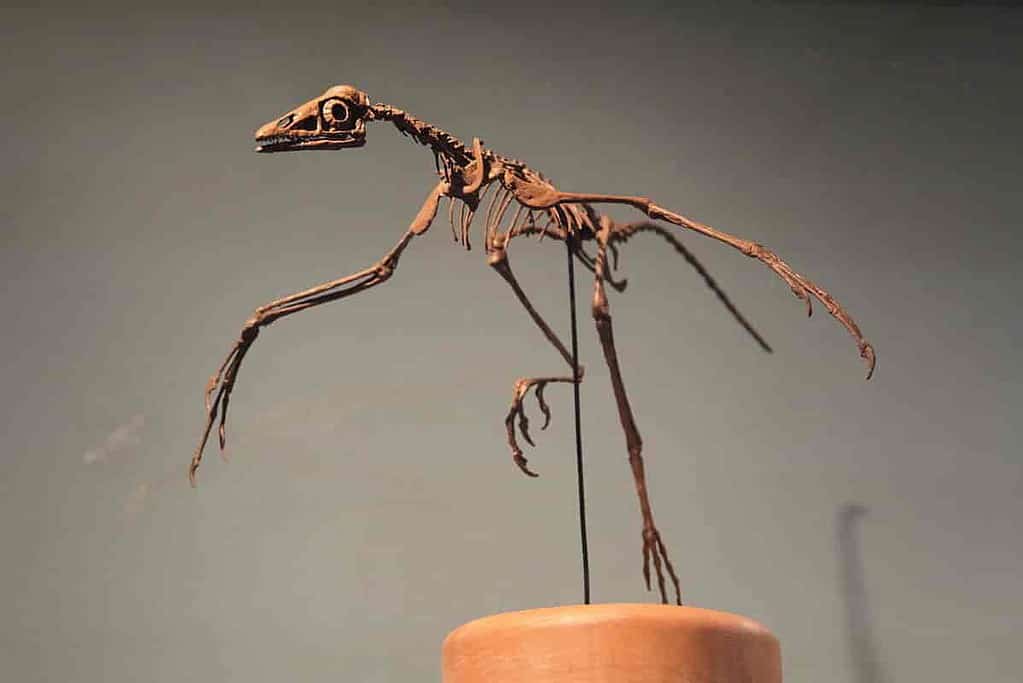
Research has also extended to Archaeopteryx’s neurological and sensory capabilities. High-resolution CT scans of Archaeopteryx skulls have provided insights into its brain size and structure, indicating well-developed vision and possibly advanced flight control mechanisms. This suggests that Archaeopteryx had sophisticated sensory and motor functions that supported complex behaviors.
Additionally, the discovery and study of other early bird dinosaurs have placed Archaeopteryx within a broader context of avian evolution. The early 21st century has seen a surge in the discovery of such dinosaurs, particularly in China’s Liaoning Province, which has revealed a rich fossil record of bird-like theropods. Species like Anchiornis, Microraptor, and Yi qi exhibit a variety of feather types and arrangements, suggesting that feathered appendages were more common among theropods than previously thought. For instance, Microraptor had a four-winged gliding ability, and Yi qi sported bat-like membranous wings. Such configurations imply that the path to avian flight may have included multiple evolutionary experiments.
Archaeopteryx in Popular Culture
Although not as famous as other dinosaurian cousins, Archaeopteryx still managed to become a recurring figure in various forms of popular culture, from films and television series to video games.
The 1988 animation “The Land Before Time” features Archaeopteryx as a wise character who guides to the main characters.
On a more humoristic note, “Ice Age 3” portrays Momma Dino (Tyrannosaurus) attempting to feed her offspring an unconscious Archaeopteryx. When Sid realizes the Archaeopteryx is alive he takes it away from the cubs and tells it to fly away as it throws it off a cliff.
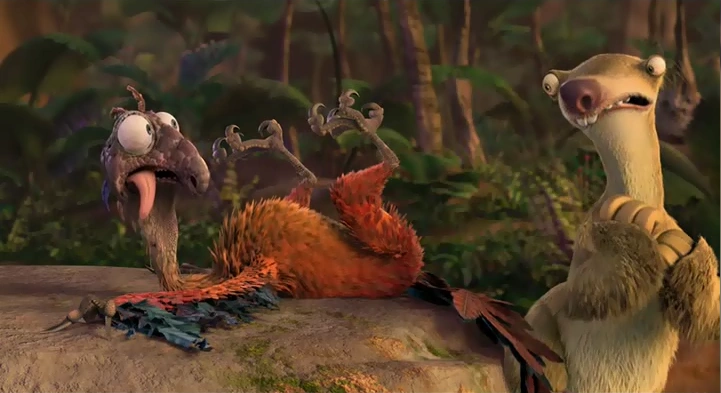
“Dinosaur Train” features Archaeopteryx in educational segments, highlighting its unique place as a transitional fossil between dinosaurs and birds. The show uses Archaeopteryx to teach young viewers about evolution and the characteristics of early birds.
The “Charles Darwin and the Tree of Life” documentary includes Archaeopteryx to underscore the evolutionary theories of Charles Darwin, showcasing it as a critical piece of evidence for natural selection and evolution.
In the “When Whales Walked” series, Archaeopteryx is again used to illustrate evolutionary adaptability, showing how life forms transition between land and air, similarly to how some species transition between land and sea. Similar depictions were made in the documentaries “Sky Monsters” and “Prehistoric Monsters Revealed”.
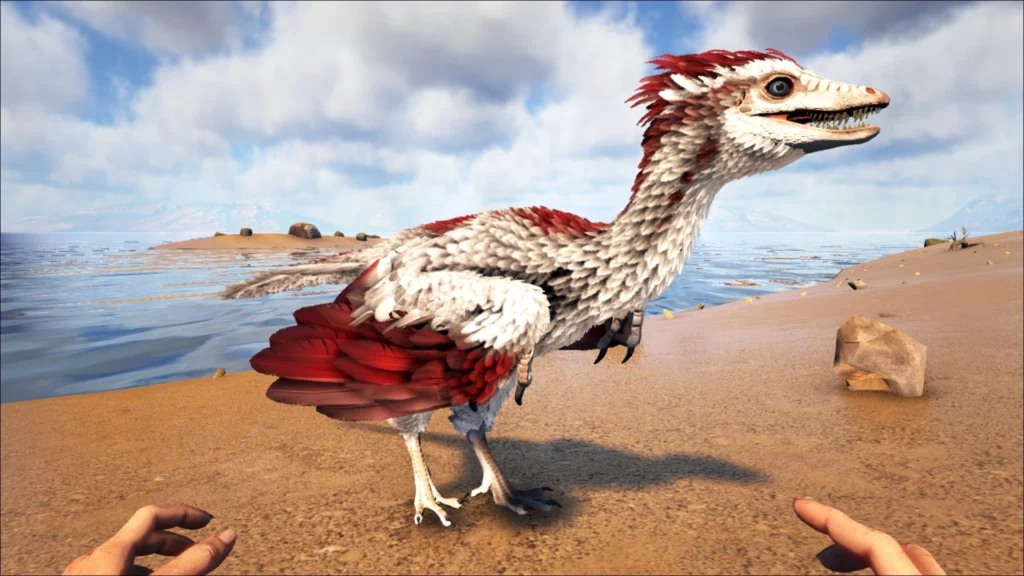
Archaeopteryx is no stranger to video games like “Tokyo Jungle” where the avian dinosaur is a playable character. Players can explore a post-apocalyptic Tokyo from the perspective of this ancient bird.
In “ARK: Survival Evolved”, Archaeopteryx takes on a role as both a pet and a tool for players. The player can use the genus for gliding across landscapes.






